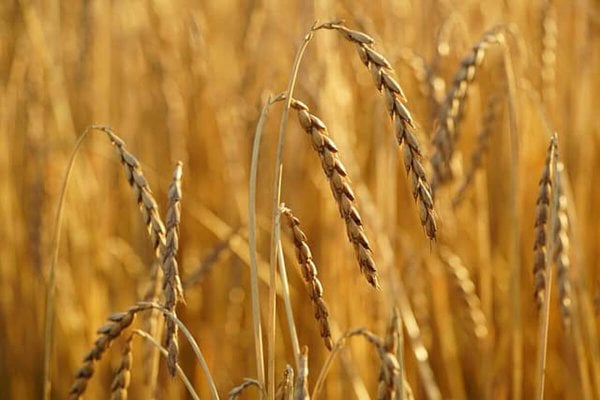


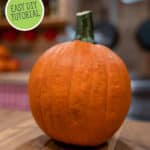






If you’ve never learned how to make pumpkin puree, you’re in for a real treat! It’s far superior to canned pumpkin puree from the grocery store (no offense to Libby’s!). There’s just something special about growing a pumpkin in your garden, letting it cure properly, then transforming it into a sweet and silky ingredient for homemade pumpkin pie, canned pumpkin, pumpkin bread or other yummy treats!

Table of Contents
ToggleWhy I Love This Recipe
There’s nothing better than planting a pumpkin seed in the spring, tending to the plant all summer in the garden, harvesting and curing the pumpkin in late summer and early fall, and then turning that crop into a homemade product.
Not to mention, if you’ve never tried homemade pumpkin pie made from homemade pumpkin puree, then you’re missing out!
In fact, our pumpkin pie filling is healthy enough that we generally make a crustless pumpkin pie custard for breakfast!
You may be asking yourself, “Why go to all the trouble of making pumpkin puree when it’s so cheap at the grocery store?” That’s a valid question, but let me try and convince you with the following reasons:
- Homemade pumpkin puree is SO MUCH MORE delicious!
- The cost of growing your own pumpkins is literally pennies per jar.
- You’ll know every ingredient in your delicious homemade pumpkin pie (or pumpkin bread, or pumpkin breakfast casserole, etc.) without the questionable store-bought can of pumpkin puree.
- You have the satisfaction of knowing you’re growing and providing your family with homegrown and healthy food.
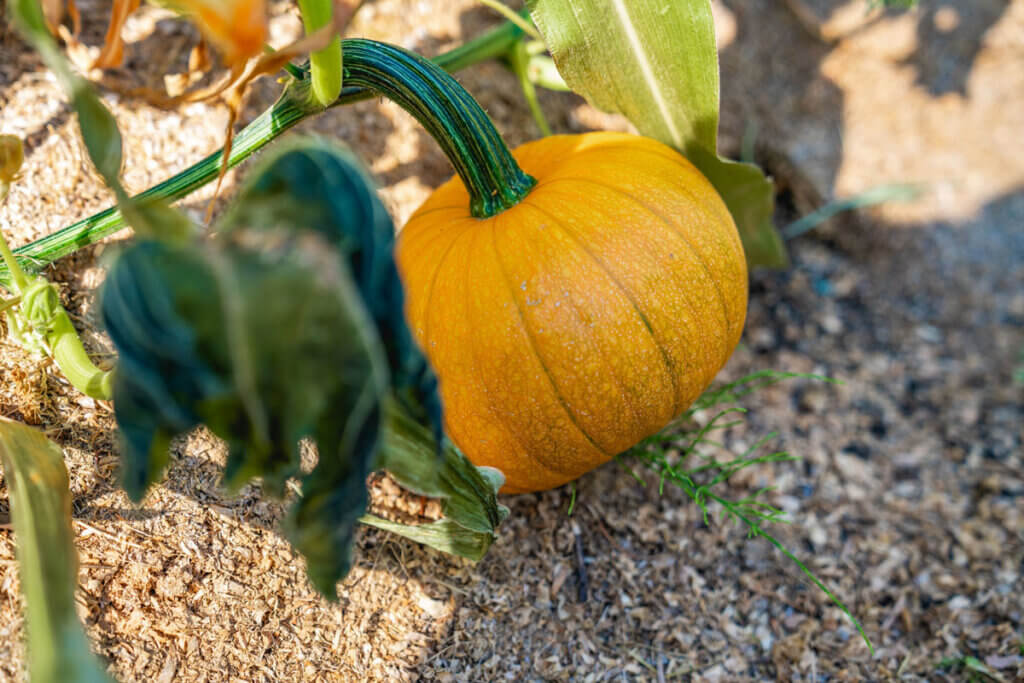
Best Pumpkins to Make Pumpkin Puree
The best pumpkins for making homemade pumpkin puree are sugar or pie pumpkins. These are different than the big jack-o-lantern pumpkins that you find at the grocery store or pumpkin patch.
The large pumpkins are meant for carving or roasting the seeds, not for pumpkin puree.
True homemade pumpkin puree is meant to be slightly sweet, and you just won’t get that flavor from a regular fresh pumpkin.

Properly Cured Pumpkins
If you’ve ever tried to make homemade pumpkin puree and thought, “This just doesn’t taste good!”, it’s probably because your pumpkin wasn’t fully cured.
As pumpkins cure, more sugar content builds up within the flesh of the pumpkin, resulting in a sweeter end product. Making homemade pumpkin puree with a pumpkin that hasn’t been fully cured will give you an almost bitter-tasting puree.
It’s really worth it to be sure the pumpkins have been cured long enough. A properly cured pumpkin shouldn’t be extremely tough. When you press your nail into the skin, it should be extremely difficult to leave a mark.
Watch the video in this blog post where I show you how to know what a properly cured pumpkin should look like.
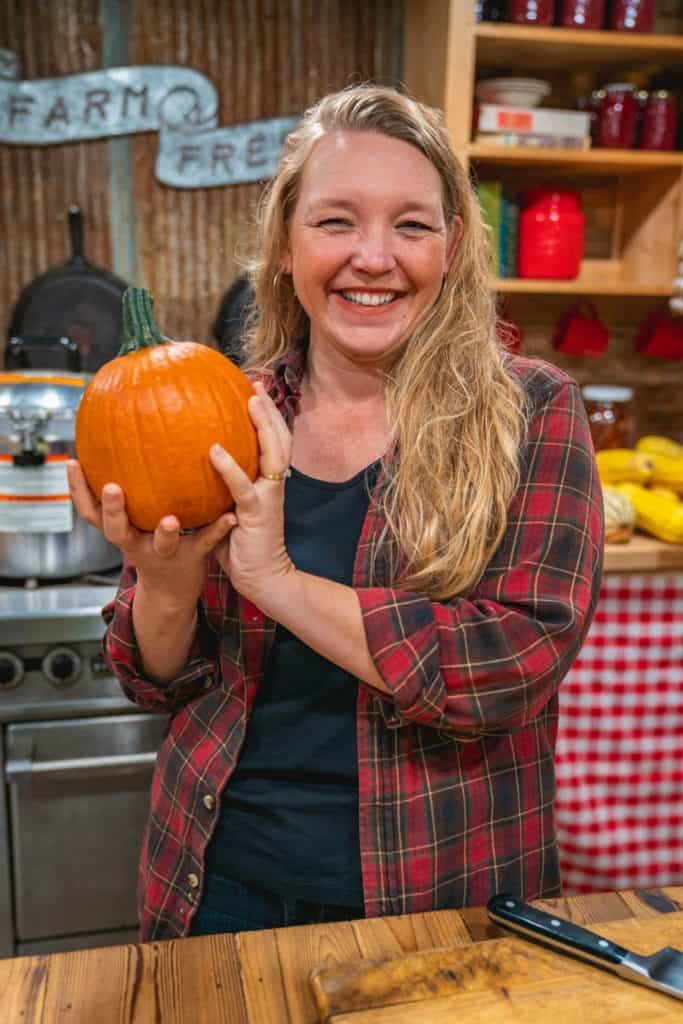
Is Your Pumpkin Ripe?
As mentioned above, it’s really important you’re working with a ripe pumpkin. Otherwise, your pumpkin puree will be bitter and unappetizing, no matter how much sugar you add to your recipe.
If you buy a pumpkin at the grocery store, early in the season, it’s likely your pumpkin hasn’t fully cured. You want a pumpkin that has a very hard exterior, one that’s almost hard to dent with your fingernail.
Pumpkins cure best once they’ve been picked from the garden, brought inside into a cool, dry area, and left alone for a minimum of a few weeks.
A few other tips to look for:
- Uniform color
- Solid skin (hard to puncture with a knife or your fingernail)
- Hard stem – you likely won’t be able to break it off with your hand, and it shouldn’t be bendy at all.
- Finally, give it a good old “thump” and listen for that hollow sound.

How to Make Pumpkin Puree
There are a few simple steps for making homemade pumpkin puree. First, you must properly cure your pumpkin. Then, remove the stem, cut and roast the pumpkin, remove the skin, remove the seeds and puree!


- Remove Stem – A cured pie pumpkin will have a very hard stem that’s difficult to remove. What we like to do is hold the pumpkin firmly in both hands and give it a good “whack” on the edge of the counter.
- Cut the Pumpkin – If you’ve got a cured and ripe pumpkin, it will be difficult to cut! There are a couple of methods you can use here. First, if you don’t mind digging out the seeds once the pumpkin has already been roasted, you can simply pierce the pumpkin with a knife and roast it whole. This is what we do most often because it’s just easier! Alternatively, you can cut the whole pumpkin in half and dig out the seeds before roasting.
- Roast the Pumpkin – Once you’re ready to roast, place the whole pumpkin (or the halves, cut-side-down) on a baking sheet lined with parchment paper or a silicone mat and bake at 350 degrees F. For smaller pumpkins, bake for 20 to 30 minutes. For larger pumpkins, you’ll want to test your pumpkin after 25 minutes, but it could take anywhere from 30-60 minutes depending on size and whether you cut it or are roasting it whole. Homesteading Hack: You’ll know the pumpkin is done roasting when a fork or knife pierces through the skin easily all the way to the center of the pumpkin.
- Peel the Pumpkin – Again, you have two options here. You can take a vegetable peeler and peel the pumpkin prior to roasting. Or, if you roast the pumpkin whole, the skin will peel off with ease once the pumpkin has cooled slightly. This is our preferred method, as it’s easy for kids to jump in and help! Plus, we find they love digging out the seeds to save for roasting.
- Remove the Seeds – If you didn’t remove the seeds prior to baking, now is when you’ll want to scoop out the seeds and separate them from the pumpkin flesh. But don’t throw them away! Homesteading Hack: Roasted and seasoned pumpkin seeds make a delicious snack! Rinse the seeds well, spray them with a little avocado oil, season them with salt or your favorite spice blend and roast at 300 degrees F until crispy and dry!
- Puree Pumpkin – If there is any remaining skin, go ahead and scoop out the flesh, and now you have your cooked pumpkin puree! You can either use it as is in recipes or, for a smoother consistency, blend it in a blender, mix it on medium-high speed in a stand mixer, give it a few pulses in a food processor, or blend it with a stick blender until desired consistency is reached. A small to medium sugar pumpkin or pie pumpkin will yield about two cups of pumpkin puree.
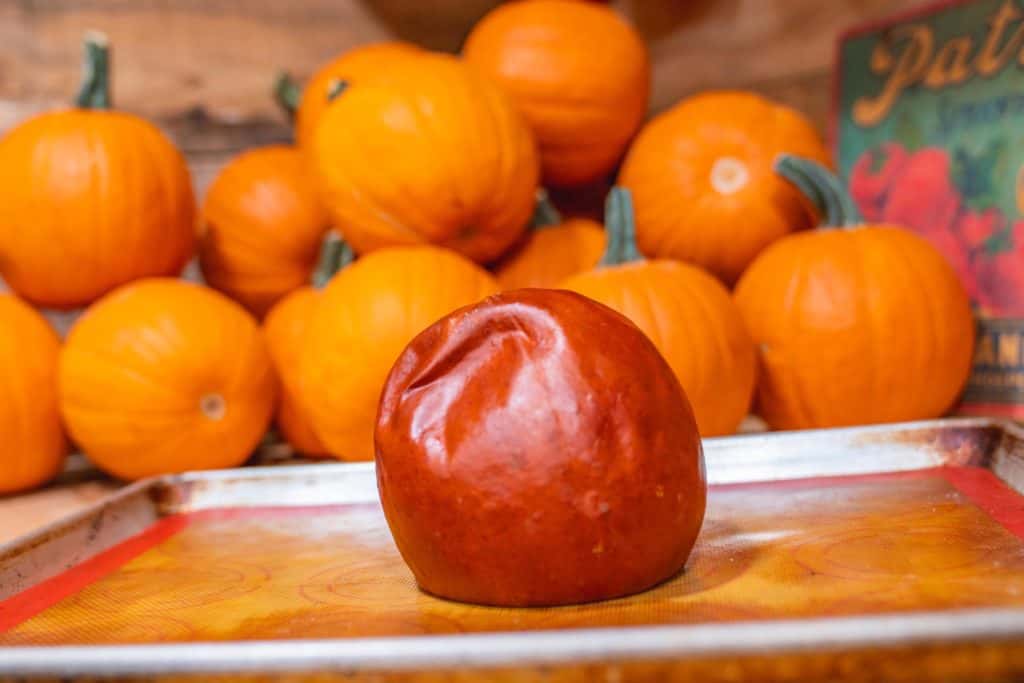




Frequently Asked Questions
How to Store Pumpkin Puree
If you use the pumpkin within a few days, you can store it in a sealed glass jar in the refrigerator.
How to Freeze & Defrost Pumpkin Puree
If you’re not going to use the pumpkin for a while, you can freeze it in a zip-top bag. We recommend pressing it flat for quick defrosting later on.
To defrost frozen pumpkin puree, place the frozen baggie in a dish with cold water for about 10 minutes.
What to Do With Extra Pumpkin Puree
Don’t you ever wonder why recipes don’t call for an entire can of pumpkin puree?
Well, the one drawback to making your own pumpkin puree is you’re never left with an exact amount. So, if you happen to have a slightly larger pie pumpkin and find yourself left with a little extra, consider the following ideas to use it up:
- Instant Breakfast Mix – We love our instant breakfast mix. Adding a tablespoon or so of homemade pumpkin puree, some pumpkin pie spice and a drizzle of maple syrup turns it into a delicious fall treat.
- Oatmeal – Make a delicious pumpkin pie oatmeal recipe by adding the last bit of pumpkin puree to the pot of oatmeal.
- Breakfast Bake – It doesn’t have to be in the recipe to add a little pumpkin flavor! Just add pumpkin puree to this oatmeal bake or French toast casserole.
- Granola – Do you have a homemade granola recipe? Adding some pumpkin puree as the liquid would be delicious!
- Dessert – Add a little extra sugar to your pumpkin puree and add it to your favorite cheesecake recipe.
- Quick Bread – Many quick breads call for applesauce or mashed bananas. You can swap out pumpkin puree to change the flavor of a delicious quick bread.
- Yogurt – Does your family love yogurt? We make homemade yogurt and swirl in some pumpkin puree, cinnamon (or pumpkin pie spice) and maple syrup. It gives it a delicious fall twist. Homesteading Hack: Turn this yogurt into popsicles by freezing it in popsicle molds!
- Smoothie – Adding the last few tablespoons of pumpkin puree to your morning green smoothie is a nutritious way to use it up.
- Pumpkin Coffee Creamer – Make a homemade pumpkin coffee creamer by adding pumpkin puree (about 2 Tablespoons) to a cup of heavy whipping cream or half and half, a splash of vanilla and a sweetener of choice (maple syrup would be a delicious pairing).
- Soup – Add pumpkin puree to a large pot of soup. Chances are you won’t even notice the flavor, but it will add a delicious subtle sweetness and your family will benefit from the added nutrients.
- Hummus – Try mixing in pumpkin puree to your next batch of homemade hummus. The flavor may surprise you!

Other Recipes You May Enjoy
- Homemade Pumpkin Pie Recipe – From Scratch
- Quick & Easy Cobbler Recipe (DIY Cobbler Mix)
- Quick & Easy Brownie Mix (For Fudgy & Gooey Brownies)
- Fudgy Sourdough Double Chocolate Brownies
- Healthy Chocolate Covered Coconut Truffles
- 5-Minute No-Knead Artisan Bread – Just 4 Ingredients
- 5 Ways to Use No-Knead Bread Dough
- Parker House Rolls Made With Sourdough
- Plum Jelly Recipe (+Time-Saving Trick)

Pumpkin Puree
Ingredients
- 1 pie pumpkin
Instructions
- Preheat the oven to 350°F.
- Take your properly cured pie pumpkin and remove the stem by carefully banging it on the edge of the counter.
- Pierce the pumpkin with a sharp knife.
- Place pumpkin on a cookie sheet lined with a silpat mat, or lightly sprayed with oil.
- Cook the pumpkin for 20 minutes, or until you can easily pierce the pumpkin with a fork.
- Remove pumpkin and allow to cool slightly.
- Peel the skin away from the pumpkin.
- Remove the seeds and other stringy bits from the center of the pumpkin.
- Use puree as is or blend until a smooth consistency is reached (in a blender, a stand mixer or with a stick blender).
- Store in the refrigerator, freeze for later, or use in your favorite recipe.
Notes
- Be sure you’re starting with a pie pumpkin. Using a pumpkin that is not specifically a pie pumpkin will not yield good results.
- Be sure your pumpkin is properly cured. An underripe pumpkin will not taste as sweet and can taste bitter or unappetizing.
- Adjust the roasting time up or down depending on the size of your pumpkin. The pumpkin shown in this recipe is considered a small to medium size pie pumpkin.
- Keep your pumpkin seeds to roast them for a healthy snack! (See note above on roasting instructions.)
- If you won’t be using the puree in a few days, seal it in a zip-top freezer bag and press contents flat before freezing.
- To defrost puree, lay the frozen bag in a shallow dish of cool water.













